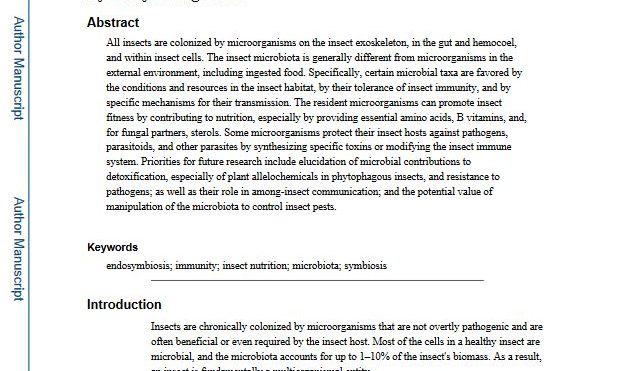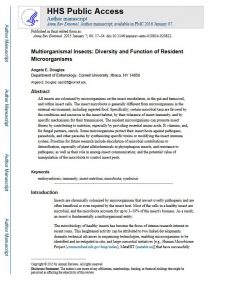All insects are colonised by microorganisms on the insect exoskeleton, in the gut and hemocoel, and within insect cells. The insect microbiota is generally different from microorganisms in the external environment, including ingested food. Specifically, certain microbial taxa are favoured by the conditions and resources in the insect habitat, by their tolerance of insect immunity, and by specific mechanisms for their transmission. The resident microorganisms can promote insect fitness by contributing to nutrition, especially by providing essential amino acids, B vitamins, and, for fungal partners, sterols. Some microorganisms protect their insect hosts against pathogens, parasitoids, and other parasites by synthesising specific toxins or modifying the insect immune system. Priorities for future research include elucidation of microbial contributions to detoxification, especially of plant allelochemicals in phytophagous insects, and resistance to pathogens; as well as their role in among-insect communication; and the potential value of manipulation of the microbiota to control insect pests.
Region: Not specific
Date published:
2015
Published by:
Annual Review Entomology
Type of resource:
Journal article
Resource topic:
Insects
Project/Programme: Not specific
Pest/Disease: Not specific
Pages:
22
File type:
External link (181 KB)




